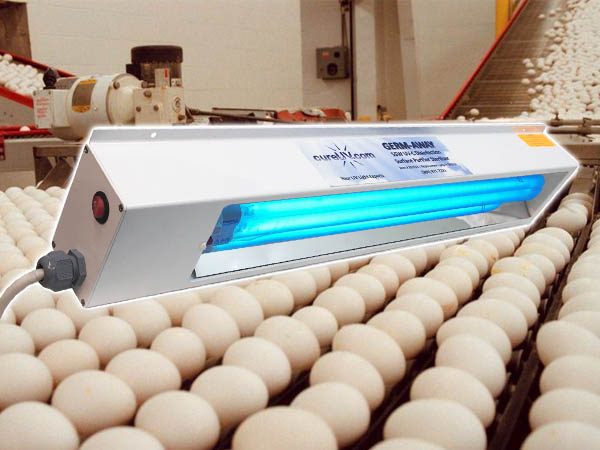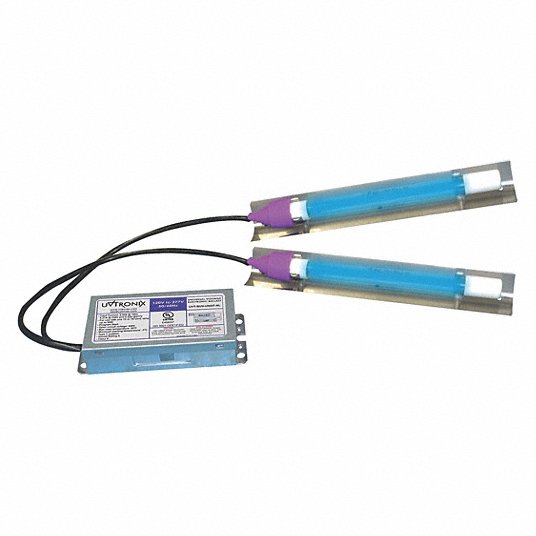Exploring the Benefits of Far-UVC Technology in UV Sanitizers: A Complete Review
Far UVC Light: A Game-Changer in the Battle Against Airborne Pathogens
In the ever-evolving battle versus airborne pathogens, the development of far UVC light has sparked substantial interest and possibility. What specifically is far UVC light, and just how does it function?
The Scientific Research Behind Far UVC Light
The clinical principles underlying the usage of Far UVC light as a possible option for combating air-borne microorganisms are both elaborate and appealing. Far UVC light refers to a particular series of ultraviolet (UV) light wavelengths, typically in between 207 and 222 nanometers, which have been located to efficiently eliminate or inactivate microorganisms such as germs and viruses. Unlike traditional UVC light, which has a much shorter wavelength and is recognized for its germicidal residential properties yet can likewise damage human skin and eyes, Far UVC light has been revealed to be safe for human direct exposure.
The essential mechanism behind the performance of Far UVC light lies in its capability to penetrate and damage the hereditary material of microorganisms, including their DNA and RNA. When revealed to Far UVC light, the genetic product undergoes a process called photodimerization, where nearby bases in the DNA or RNA molecule bind together, avoiding replication and providing the microorganism not able to create or replicate infection.

Exactly How Much UVC Light Works
Much UVC light operates by using particular ultraviolet wavelengths to effectively reduce the effects of microorganisms and avoid their replication, making it an encouraging solution for combating air-borne pathogens. Unlike traditional UVC light, which is dangerous to human skin and eyes, far UVC light has shorter wavelengths, commonly in the range of 207 to 222 nanometers (nm), that do not penetrate the outer layer of the skin or the tear layer of the eye. This makes it risk-free for constant human direct exposure, while still being dangerous to viruses and bacteria.
The efficiency of far UVC light depend on its ability to penetrate and ruin the DNA and RNA of bacteria. When revealed to much UVC light, the hereditary material of these pathogens is damaged, providing them incapable to replicate and infect cells. Furthermore, research studies have actually shown that far UVC light can properly inactivate airborne infections, such as flu, measles, and coronaviruses, including SARS-CoV-2, the infection in charge of COVID-19.
In addition, far UVC light is additionally with the ability of disinfecting surfaces and objects in an enclosed area. By setting up much UVC lighting fixtures or utilizing mobile much UVC light devices, it is feasible to continuously decontaminate the air and surface areas, lowering the risk of air-borne transmission of pathogens.
Advantages of Far UVC Light
Using much UVC light deals a range of substantial advantages in combating air-borne virus and making sure a much safer environment for continuous human direct exposure. Among the key advantages of far UVC light is its capability to properly reduce the effects of numerous kinds of dangerous germs, infections, and fungis without causing injury to human beings. Unlike traditional UV light, which can be unsafe to human skin and eyes, far UVC light has a much shorter wavelength that enables it to target and ruin virus while posturing minimal threat to human wellness.

Additionally, much UVC light is much more secure for the atmosphere compared to typical sanitation approaches. Chemical anti-bacterials often contain harmful components that can have adverse influence on the atmosphere. Far UVC light, on the other hand, does not create any kind of damaging by-products or residues, making it a much more eco-friendly and lasting service.
Applications of Far UVC Light
Among the vital usages for much UVC light remains in the area of air filtration and disinfection. Far UVC light has shown to be efficient in removing air-borne microorganisms such as viruses, bacteria, and fungi. This technology works by producing a details wavelength of light that is qualified of penetrating the external layers of microorganisms and harming their DNA, making them not able and inactive to duplicate. Unlike traditional UV light, much UVC light is risk-free for human exposure, making it appropriate for continuous usage in public spaces such as offices, colleges, and hospitals.
Another application of much UVC light is in the health care industry. It can be utilized to decontaminate healthcare facility rooms, operating cinemas, and clinical equipment, minimizing the threat of healthcare-associated infections. Additionally, much UVC light can be incorporated right into HVAC systems to cleanse the air circulating in structures, offering an included layer of defense against air-borne pathogens.
In addition, much UVC light can be used in the food sector to avoid foodborne illnesses. It can be used to decontaminate food processing centers, killing microorganisms and other microbes that might contaminate foodstuff.
Future Effects of Far UVC Light
The potential future applications of much UVC light are large and hold assurance for different industries and markets. Among the crucial locations where far UVC light could have a considerable effect is in health care settings. Hospitals and clinics might use far UVC light to sanitize person spaces, operating movie theaters, and waiting locations, decreasing the risk of healthcare-associated infections - far-uvc. This could potentially lead to improved patient end results and lowered health care costs.
Furthermore, using far UVC light in public spaces such as airports, train terminals, and mall might help manage the spread of air-borne microorganisms. By continually decontaminating these areas, the threat see here now of transmission could be substantially minimized, offering a much safer atmosphere for people.
One more potential application of far UVC light remains in the food sector. Far UVC light could be utilized to sanitize cooking surfaces, product packaging materials, and storage space areas. This can help prevent the contamination of food and decrease the event of foodborne ailments.
In addition, much UVC light can be used in cooling and heating systems to sanitize the air flowing in structures. This can be specifically helpful in crowded rooms such as offices, colleges, and theaters, where the risk of air-borne transmission is higher.
Verdict
To conclude, far UVC light has become a game-changer in the fight versus air-borne pathogens. Its special properties and capability to safely kill bacteria and infections make it an appealing option for numerous applications. From public rooms to health care settings, far UVC light deals numerous advantages in reducing the transmission of diseases. With further r & d, its prevalent execution might have substantial effects for the future of infection control.
Far UVC light refers to a details range of ultraviolet (UV) light wavelengths, commonly in between 207 and 222 nanometers, which have actually been discovered to properly kill or inactivate microbes such as infections and bacteria. far-uvc. Unlike traditional UVC light, which has a much shorter wavelength and is known for its germicidal homes but can additionally harm human skin and eyes, Far UVC light has been revealed to be risk-free for human direct exposure
Unlike conventional UVC light, which is unsafe to human skin and eyes, far UVC light has shorter wavelengths, usually in the variety of 207 to 222 nanometers (nm), that do not pass through the external layer of the skin or the tear layer of the eye. Unlike standard UV light, which can be unsafe to human skin and eyes, far UVC light has a much shorter wavelength that allows it to target and destroy pathogens while posing minimal risk visit our website to human health and wellness.
Unlike standard UV light, far UVC light is safe for human exposure, making it suitable for continuous use in public spaces such as workplaces, health centers, and institutions.